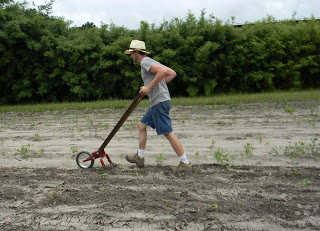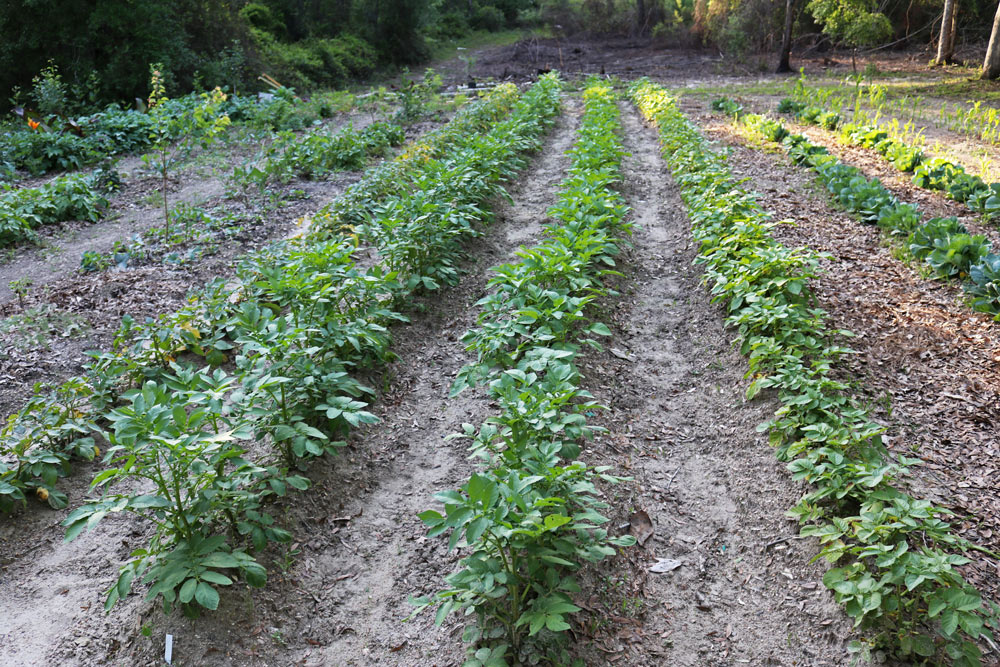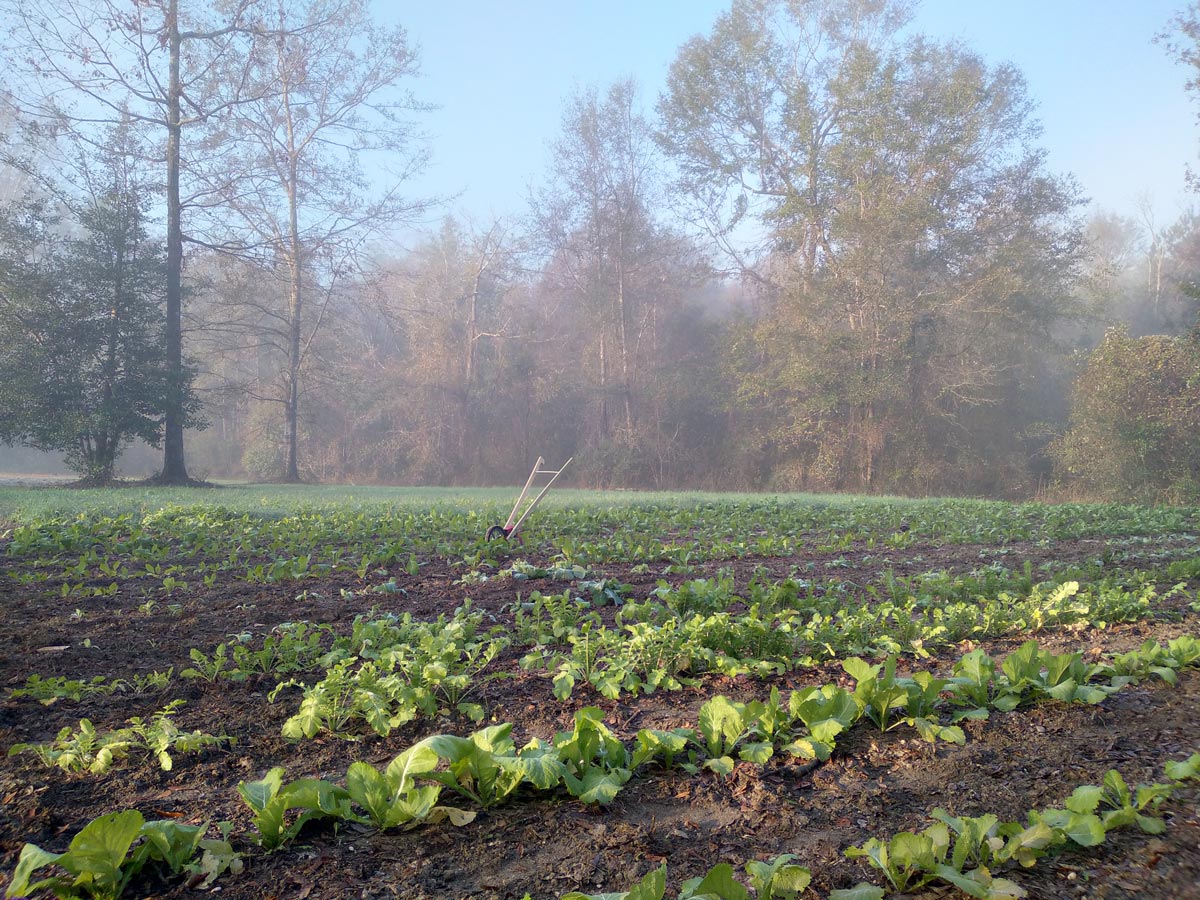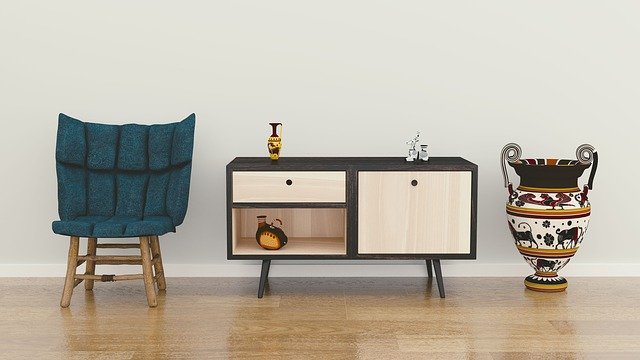Sometimes I think the Minimalists are right. There are times I just want to pack up everything and send it off to the thrift store, leaving only a potted plant, a laptop and an antique vase.
Simplicity sounds good in a complicated world. One good book on the bedside table, one coffee mug, and just one wife – perfect!
Are you overwhelmed when you look at your garden? Do you have raised beds to fix, a compost tea bubbler that isn’t getting used, a shed full of gardening junk and a broken tiller that is begging for repair?
In a world that wants to sell you stuff, sometimes it’s easy to lose track of what you really need to get a job done. Gardening doesn’t have to be expensive or complicated. Today I’ll share five ways to keep gardening simple – maybe you’ll find it inspiring.
1. Keep Irrigation Simple
There’s nothing wrong with liking drip irrigation – but I don’t use it. I don’t like having to pick up drip tapes, I don’t like dealing with leaks, and I don’t like hoeing around things. I’ve gut through drip lines before, and I’ve had squirrels chew holes in the hoses.
If you need irrigation, it’s hard to go wrong with simple overhead irrigation on stand pipes. We buried some PVC in the garden with Rainbird sprinkler heads on tops of PVC pipes hose-clamped to re-bar and – voila – we could turn a handle and make it rain.
Alternately, use wide plant spacing and you can mostly garden with the rainfall. Rainfall is the minimalist approach to gardening and I highly recommend learning to use it well.
2. Use Simple Tools
There’s nothing like a good old-fashioned hoe, especially one that’s sharp and angled correctly. I buy used old hoe heads from ebay and put them on new handles, then press them back into service in the garden. Other simple tools for the garden include a spade, a digging fork, and, of course, a machete. My wheel hoes are much-loved.

But you only “need” a wheel hoe if you have a larger garden. For a little backyard plot, a good old-fashioned hoe can’t be beat.
3. Make Simple Garden Beds
No wood, no problem! Just make beds in the ground, like this.
Or, if you have more space, just make simple row gardens.

It’s really easy and you don’t have to feed or water much.
I don’t bother mulching my rows, as gathering mulch and throwing it around takes a lot of time and effort. Keep it simple!
4. Use Simple Old-Fashioned Amendments
Like I share in my long-form demonstration film 7 Ways to Feed Your Garden for Free, you don’t have to get complicated with your fertilizers. Ashes, compost, manure, compost tea… it can be simple.
Compost is the very best thing you can add to your garden. I wrote an entire book on simple composting.
5. Put Your Garden Nearby
This is something we often overlook. If possible, put your garden where you’ll see it and spend time in it. Out of sight = out of mind. It’s much simpler to walk right out your door into the garden, rather than trekking to the back corner of your yard. If you’re near the garden, you’ll take better care of it.
These are just a few thoughts. Our garden is a serious family food garden and we have to keep it simple. Buying earthboxes or building aquaponics systems or trying to garden in barrels or horse troughs or whatever just doesn’t fit normal family homesteading life. Keep it simple, give your plants what they need and harvest lots of food.
If simple backyard Victory Gardens in the dirt were good enough to get America through WWII, there’s no need to reinvent the wheel. Keep it simple!
Minimalist, even.

Soil, water, a few tools and some labor is all you need.
Keep this in mind: more food/less work.
One of these days I hope to write a book on Minimalist Gardening. Stay tuned.
Minimalist interior design image at top by Monoar Rahman Rony from Pixabay


2 comments
David,
Do not let the minimalist garden thing slide to the back burner. I think you could bring your minimalist lifestyle in general to a book. It might do quite well and be well received.
Thank you, Mark. I plan on writing it!
Comments are closed.